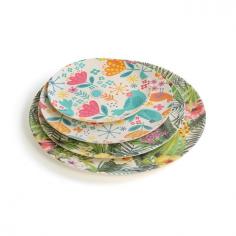
The bamboo fiber powder(https://www.cnnlh.com/product/bamboo-fibre-tableware/) is then mixed with resin, an adhesive that helps bind the fibers together to form a hard but lightweight material that is suitable for making tableware. The mixture is then poured into molds in the shape of the desired product- be it a plate, bowl, or spoon- and heated under high pressure. Upon cooling, the tableware is released from the molds, smoothed, and polished to give a finished product that is ready for the market. The Bamboo Fiber Tableware Factory doesn't just stop at producing high-quality bamboo tableware. Conscious of the impacts of its operations on the environment, it implements a series of eco-friendly measures. For instance, most factories use bio-energy sourced from bamboo residues to power their operations.

